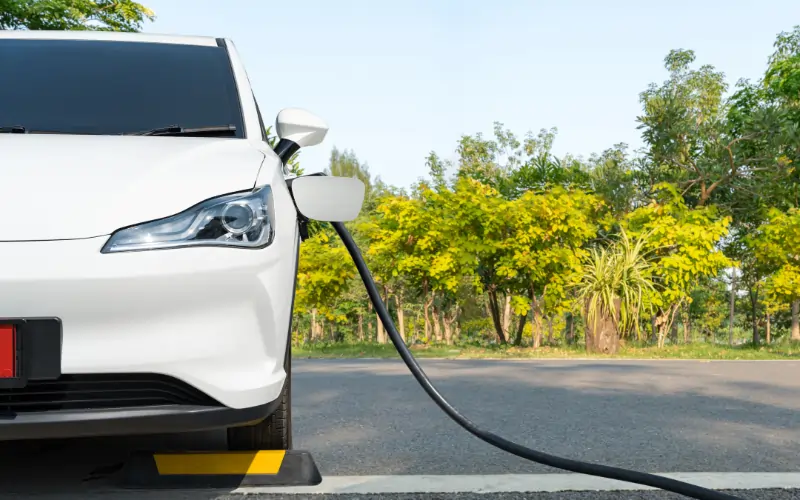
Electric Cars that charge themselves
Electric cars have gained significant popularity in recent years due to their low environmental impact and fuel efficiency. However, one of the major drawbacks of electric cars is their limited range, which is why charging is a crucial aspect of owning an electric vehicle. While many car owners dream of their cars being able to recharge themselves, the reality is that self-charging electric cars is not yet feasible due to a variety of limitations. In this article, we explore the reasons Why cant electric cars charge themselves and the potential solutions to this problem.
Limitations of Self-Charging Electric Vehicles
Physics of Energy
The fundamental limitation of electric cars charging themselves is the laws of physics. Energy cannot be created out of nothing, and electric cars require energy to move. The only way to generate electricity is through other sources of energy such as fossil fuels, nuclear power or renewable energy sources. In order to charge an electric vehicle, energy must be transferred from one energy carrier to another.
Limitations of Battery Technology
Another factor limiting self-charging EVs is the current limitations of battery technology. Batteries have a limited capacity and need to be recharged regularly. While advancements in battery technology have increased the range of EVs, the fact remains that batteries need to be charged externally to function. Until there is a significant improvement in battery technology, it is unlikely that EVs will be able to charge themselves fully.
Solar Panels on EVs
One of the ways self-charging can be achieved in EVs is through the use of solar panels. However, the amount of power generated by solar panels on the roof of a vehicle is limited. The average solar panel on a car can produce about 100-300 watts of power under ideal conditions. This amount of power is not sufficient to run the vehicle, even on a short trip. Additionally, solar panels require direct sunlight and their output is affected by factors such as the angle and orientation of the panels, as well as weather conditions. Therefore, relying solely on solar panels to power an EV is not feasible.
Regenerative Braking
Regenerative braking is another potential source of self-charging for EVs. Regenerative braking works by capturing kinetic energy that is usually lost during braking and converting it into electrical energy to recharge the battery. While regenerative braking is an efficient way to recover energy, it is not a sufficient source of power to fully charge an EV. EVs also lose kinetic energy in other ways, such as air resistance at high speeds and rolling resistance from the tires, which cannot be recovered through regenerative braking.
Cost
The cost of implementing a self-charging feature for electric cars is another limitation. To incorporate solar panels, the surface area of the vehicle will need to be increased and that will add to the cost of manufacturing. In addition, the integration of solar panels, energy storage systems and other charging features would require additional technology and maintenance, increasing the overall cost. A possible solution to this issue is to wait for solar technology to improve and become cheaper.
Efficiency
Another limitation of self-charging electric cars is efficiency. While underground wireless power-transfer technology is indeed a reality in today’s world a vehicle’s energy requirements increase with its speed. An electric vehicle driving at top speed will require more energy to move and charging through wireless power transfer will cause loss of energy leading to inefficient charging.
Potential Solutions
Better Battery Technology
One of the most obvious solutions to charging limitations is to develop better battery technology. Innovative breakthroughs in energy storage could increase the capacity of batteries and improve their efficiency, enabling electric cars to travel farther and charge with less external power.
More Efficient Solar Panels
Advancements in solar panel technology could reduce the reliance on external power sources by generating more energy through the car’s solar panels. If solar panels were designed more efficiently, for example, vehicles could charge on sunny days, regardless of the energy used during driving.
Wireless Charging
Wireless charging technology may provide a solution to the inconvenience of having to plug in electric cars to a power source. With underground wireless power-transfer of energy becoming more accessible, a similar technology may soon be available for electric cars. If wireless charging were to become more widespread, it could provide a more efficient and convenient way for electric cars to recharge.
Energy Recapturing
In addition to adding more energy storage or utilizing alternative sources of energy, electric vehicles could recapture some of the energy that would otherwise be lost during braking, for instance, and direct this energy back into the car’s battery system to recharge it. Regenerative braking technology has been utilized by many electric cars over the last several years, with great success.
Battery Swapping Stations
Another potential solution is battery swapping stations. With this method, the driver could pull into a charging station, where a robot would remove the current battery from the car, replace it with a pre-charged one, and send the driver on their way while the depleted battery is charged quickly.
FAQs About Self-Charging Electric Vehicles
Can electric cars be charged while parked?
Can the car’s motion charge the battery?
Are there any self-charging electric vehicles currently on the market?
Can an electric car charge itself while driving?
What is the most efficient way to charge an electric car?
What are the limitations of electric vehicles?
1. Long charging times
2. Limited range
3. Limited charging infrastructure
4. Higher upfront cost
5. Cold weather impacts
6. Battery Degradation
7. Heavy Battery Weight
8. Charging Time







